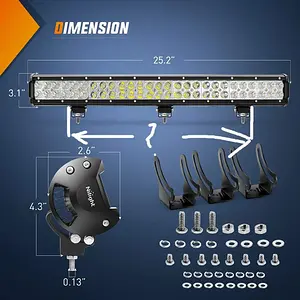W
wsiler

I drove a 2024 Toyota Tacoma for the first time yesterday. That’s relevant to an article about the new 4Runner, because both it, the new Taco, and also the new Land Cruiser are all built on the same platform, with the same engines, axles, and suspension. And that creates a conundrum for shoppers, because prices between those mechanically-very-similar vehicles range from $33,000 all the way up to $75,000, and you’re left parsing very minor differences to try to decide how much money to spend. This is my effort to simplify that for you as much as possible.
What’s going on here is called platform sharing. And while that practice is about as old as the mass-produced automobile itself (General Motors was doing it as far back 1908), I don’t think we’ve ever seen an example of the practice with such a large spread of prices, sizes, or sheer number of different models all built on the same basic frame.
That frame is called TNGA-F, and it now underpins every body-on-frame Toyota and Lexus vehicle, running from the base $33,000 Tacoma, all the way up to the $130,000 Lexus LX600 Ultra Luxury (yes, that really is the name), and includes the all-new 2025 4Runner, Land Cruiser, Tundra, Sequoia and Lexus GX along the way.
My friend, and former car engineer David Tracy does a good job detailing all the little changes Toyota makes to that frame to adapt it to such a wide array of applications. In short, applying different thicknesses of steel to certain parts of the frame can add or take away strength and weight.
In addition to using the same frame, full-size pickups and SUVS—the Toyota Tundra and Sequoia, and the Lexus GX and LX—all share the same turbocharged six-cylinder engines, and basic suspension and axle components. While all the mid-size vehicles—Tacoma, 4Runner, and new Land Cruiser—use the same turbocharged four-cylinder engines and lighter suspension and axles.
Across all those vehicles, there’s two versions of each engine—one that includes an electric motor and batteries, and one that doesn’t. But unlike the hybrid powertrains we’re used to seeing from Toyota, those aren’t used to maximize fuel economy, they’re used on all these trucks to maximize performance.

The new Land Cruiser is mechanically identical to hybrid versions of the new 4Runner. (Photo: Toyota)
Where gasoline-only versions of the Taco and 4Runner all make 278 horsepower and 317 pound-feet of torque (the cheapest work-spec Tacomas are detuned to 228 horsepower and 243 pound-feet), ones wearing a hybrid badge will make 326 horsepower and 465 pound-feet. All versions of the new Land Cruiser are only available as hybrids. Whether they wear a hybrid badge or not, all versions of these trucks return miles-per-gallon numbers in the low 20s, depending on the traction options detailed below, and the weight added by luxury features.
Before we dive into the minor differences between the new mid-size Toyota trucks, it’s important to first establish one thing. Versus lighter, more efficient unibody passenger cars which are designed to move people, trucks are built using the heavier, body-on-frame configuration because it’s the job of a truck to move weight. Beyond shiny paint jobs, confusing badges, or snazzy touchscreen infotainment systems, we quantify the capability of a truck through the amount of weight it’s designed to carry.
The secondary big mechanical differentiator truck people use to quantify capability are off-road features, which are traction, gearing, suspension articulation, tire size and angles. Toyota has made our job here easy, since all these mid-size trucks share the same basic suspension layout (again, the cheapest Tacoma trim level differs slightly in its use of a rear leaf spring rather than coil layout), and the same transmission and transfer case. The only difference we really have to worry about here is traction.

The new Tacoma shares most styling cues with the mechanically identical 4Runner. (Photo: Toyota)
Let’s breeze through this: rear-wheel drive (RWD) sends power to the wheel on the rear axle with the least traction. Adding an optional locking axle differential will match wheel speeds across that axle, doubling traction. Four-wheel drive (4WD) sends power to the wheel on each axle with the least traction, also doubling traction versus an unlocked rear-wheel drive vehicle. Part time 4WD vehicles nominally operate in RWD, and enter 4WD when the driver selects that mode, or when a computer does that for them. All-wheel drive (AWD) sends power to the one wheel (of all four) that has the least traction. Full time 4WD vehicles nominally operate in AWD, and enter 4WD when the driver or computer selects it. 4WD vehicles can also be equipped with locking axle diffs or modern traction electronics; Toyota is not offering locking front diffs on any of these vehicles.
If you drive off-road, ever, even just on easy gravel roads, then you should choose 4WD. Even on those simple gravel roads, it’ll add an appreciable amount of stability. If you do anything more difficult, then you’ll appreciate a locking rear differential too. If you regularly drive in winter conditions, you may appreciate the extra safety provided by AWD, and select a full-time 4WD vehicle as a result. But don’t forget that most winter capability is provided by tires.
The Tacoma and 4Runner are available in RWD, part time 4WD, and full-time 4WD forms, with optional locking rear differentials. The Land Cruiser is only available in full-time 4WD and includes a locking rear diff.
So choosing which one of these vehicles is right for you should be easy. Find the one with enough payload for your needs, then choose which traction features are appropriate for the conditions in which you plan to drive, then buy the cheapest vehicle with that spec.
Unfortunately, Toyota is taking what should be a process that simple, and making it as complicated and confusing as possible. Not only is it packaging those traction features into confusingly-named options packages that include tchotchkes you probably don’t need or want to pay for, but those non-functional, non-mission-critical add-ons can actually reduce mechanical capability, so we really need to discuss them. This is made even more complicated because Toyota is not yet releasing full mechanicals specs for these vehicles, so we’re going to have to take educated guesses about some numbers.
I’ve discussed payload at length before. Both as it pertains specifically to mid-size Toyotas, and trucks in general. So I won’t repeat myself here, except to say that weight adds up fast. And you know what’s heavy? Big battery packs. The hybrid powertrain Toyota is putting in these trucks adds about 400 pounds of weight. While the company hasn’t yet disclosed payload numbers for the new 4Runner, we have seen a few photographs of the vehicle’s door jamb (all new vehicles have a sticker in the driver’s door frame that lists suggested tire pressures and maximum payload), and in those photos we’ve seen a payload of 895 pounds.
Let’s run some math on that real fast. A full tank of 19 gallons of fuel weighs 114 pounds. The average adult male in this country weighs 199.8 pounds. A vehicle with an 895 pound payload cannot safely carry four average adult males.
So, I’m going to suggest you skip the hybrid if you want to buy a new 4Runner or Tacoma. I cannot tell you what the maximum payload for other versions of these trucks are, but I think it’s safe to assume that non-hybrid 4Runners and Tacos will be able to safely carry at least 400 pounds more.
It also looks as if high-spec trim levels for these trucks are only going to come bundled with the hybrid powertrain. So, if you want to safely carry passengers, use the trucks to carry sports equipment, camping gear, or home improvement supplies, you won’t be able to buy a 4Runner or Tacoma with the TRD Pro or Trailhunter packages.
What about the Land Cruiser? It’s available as a hybrid only, but Toyota says its payload is about 1,600 pounds. Given that it’s using the same exact frame, axles, suspension, and powertrain as the other two mid-size trucks, I’m not sure why its payload is so much higher, and Toyota is refusing to provide me with more details. Make sure you check that door jamb sticker on any truck before you buy it. But if the Land Cruiser really does ship with a 1,600 pound payload, that will be the reason to buy one over its otherwise mechanically identical siblings.

That ginormous touch screen sits about two feet from your eyeballs in these mechanically identical trucks. It’s…a lot. (Photo: Toyota)
However, that’s only if you want to spend $55,000 or more on a mid-size truck. Because these things are going to be expensive. Toyota has not yet released 4Runner pricing, but it did just do that for hybrid versions of the Tacoma, which are going to cost as much as $65,000 in its TRD Pro form.
As another note on the the hybrid powertrain, it does not increase towing capacity for any of these vehicles. Given that it doesn’t use less fuel, and that you’re not buying a body-on-frame vehicle to drive fast, I really fail to see the point of spending extra money to buy a hybrid Toyota truck.
Given that, I think the sweet spot for both the Tacoma and 4Runner is going to be in non-hybrid TRD Offroad trim. That includes a locking rear differential, and an optional electronic disconnect for the front sway bar (sway bars increase on-road safety but reduce off-road articulation). Optioned like that, you can expect to pay about $47,000 for a Tacoma, and likely a little more for a 4Runner.
So what do these new mid-size Toyotas drive like? Again, because they’re mechanically identical, my time in a Tacoma yesterday should apply generally. It was fine. The cabin feels a little cramped, the giant touchscreen sits way too close to your eyeballs to not be distracting, and the driving experience feels pretty much like it does in the Ford Ranger, Chevy Colorado, or GMC Canyon, while being notably less fun than that provided by any version of the Ford Bronco. But for the first time this century, a mid-size Toyota feels like modern vehicle, if still not a particularly exciting one.
If you’re one of those truck buyers that prioritizes Toyota’s reputation for reliability above all other factors, you can now buy one of these trucks with notably fewer sacrifices, so long as you’re careful not to spend too much money buying one of the less capable versions.
The post A Skeptic’s Guide to the 2025 Toyota 4Runner, Tacoma, and Land Cruiser appeared first on Outside Online.
Continue reading...







